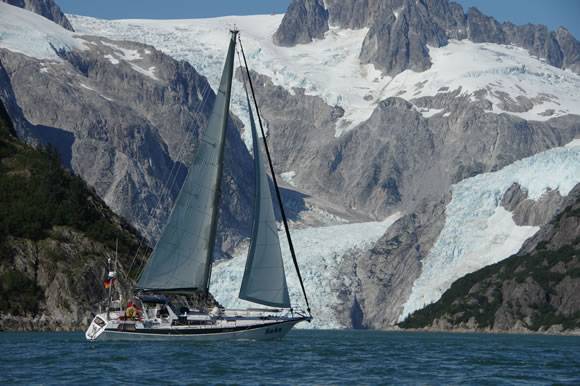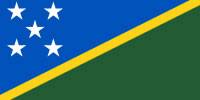Entry Date: 18.11.2014, at 14:00:00 hrs (local)
Honiara - Gizo
Iron Bottom Sound

| PRID: | 10735 |
|---|---|
| LegID: | 277 |
| LegNo: | 39 |
| Latitude: | S009°14.14' |
| Longitude: | E160°00.47' |
| Day#: | 432 |
| Log (Day): | 12 nm |
| Log (Leg): | 152 nm |
| Log (Total): | 25033 nm |
In the morning we take the anchor up. The next destination is the Roderick Bay in the Florida Islands.
Our passage leads us across the ”Iron Bottom Sound”, the body of water between Guadacanal and the Florida Islands. The original name of this sound was ”Sealark Channel”. We are enjoying the sailing. On the port side we see the volcanic island Sava and everything is nice and peaceful. But this has not been always like this.
The number of ships sunken in these waters during WWII gave the Sealark Channel an additional name - Iron Bottom Sound. A total of 35 US/Allied and 42 Japanese warships and many transports were sunk during the Guadalcanal Campaign and most rest on the bottom (Picture). The ships sunk in the Guadalcanal campaign included Aircraft Carriers, Battleships, Cruisers, Destroyers, Submarines, PT Boats and Transporters. More than eleven thousand men who served on these ships lost their lives.
Background
From December 1941 to August 1942 the Japanese had been sweeping all before them. Hong Kong, Malaya, Singapore, the Philippines, the Dutch East Indies and many other places in the Pacific had fallen to the seemingly unstoppable Imperial Japanese forces.
Exploiting their successful attack on Pearl Harbour 7th December 1941, the Japanese struck at American, British, Chinese and Dutch territories in the Pacific. The Japanese, by mid April 1942, had established bases in New Guinea/Solomon area, thus threatening Australia itself.
When it was discovered in early July that the Japanese had begun construction of an airfield on Guadalcanal, US Forces undertook the first American land offensive of the war.
On 7th August 1942, supported by ships and aircraft of the South Pacific Force of the US Pacific Fleet, the 1st Marine Division landed at Tulagi and Guadalcanal. Strong resistance on Tulagi and its smaller adjacent islands was quickly overcome and the base secured. Initially there was no ground opposition on Guadalcanal. By the afternoon of the second day, US Marines reached Henderson Field which then became the focal point of all future operations.
Japanese reaction was prompt and vigorous. In the early morning hours of 9th August, a strong Japanese fleet steamed down ”The Slot” (the narrow waters between the two chains of the Solomon Islands) and inflicted extremely heavy losses on the allied naval forces. The Battle of Savo Island was the first of seven naval battles fought during this campaign.
From their advance bases, both the Americans and Japanese attempted to build up their strength on Guadalcanal. A succession of grim struggles on land, on the sea and in the air, lasted for six months until February 1943. The decisive victory at the Battle of Midway in June 1942 halted the main Japanese offensive and reversed the strategic situation in the Pacific. The ensuing victory in the Guadalcanal campaign together with the successful repulse of the enemy in South-eastern New Guinea marked the turning point of the war in the Pacific.






